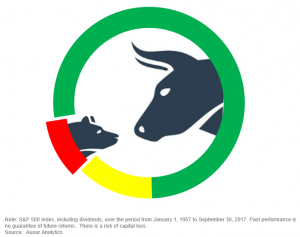Danny Deutsch’s motto and the title of his book, Often Wrong, Never in Doubt, are about the power of confidence and moving forward even when it results in as many misses as hits. It worked for him. It doesn’t work in investing, which relies on empirical evidence, not hope. However, we find the motto does apply to the alternative investing space—given its poor performance coupled with confident messaging.
The size of this space is more than $6 trillion and encompasses real estate (for investment purposes), private equity, and hedge funds, as well as other, more esoteric forms of investing. Alternatives have seen substantial growth as investors look to protect their assets and strive for superior returns. It’s a wonderful idea. But one needs to understand the success rate of these alternatives and where they do and don’t fit within the investment framework.
In the early days, alternatives were investment vehicles that gave you access to the really smart investors and gave them the freedom to go wherever they felt there was an opportunity. Given the large fees these alternatives charged, it’s no wonder that many institutions and investment experts created their own offerings. And so, the alternatives trend grew. Unfortunately, the performance of the sector, in most circumstances, lags the traditional public markets and, in most situations, takes on more risk.

Let’s pause for a fictitious conversation:
Joan: “I have an investment idea that has delivered a 10-percent-ish return on average over the last 90 years. There is some risk in it, of course, given daily volatility, but historically, it has gone up about 80 percent of the time (when measured on a rolling six-month basis) and only suffers 10 percent or greater drawdowns about 10 percent of the time. Even with those drawdowns, the historical experience is that it recovers all its losses over the subsequent two years on average. What do you think?”
Larry: “That sounds okay, but the risk of dropping scares me. I have an idea that costs more, produces lower average returns, and typically has higher taxes, too. And, most importantly, it’s not correlated with your idea.”
Joan: “Why would I want something that is not correlated with what has historically been a good investment?”
[Close up on Larry looking like a deer in headlights.]
Larry: <silence>
 The 2008 financial crisis was devastating to a lot of people, making the desire for downside protection understandable and front-of-mind. However, the focus on what was an uncommon event has also caused many to forget the positive attributes that are quite common in public investing. When looking at rolling six-month return periods, equity markets (as represented by the S&P 500) produce positive returns about 80 percent of the time. Only 10 percent of the time do public markets produce a material (as in greater than 10 percent) loss.
The 2008 financial crisis was devastating to a lot of people, making the desire for downside protection understandable and front-of-mind. However, the focus on what was an uncommon event has also caused many to forget the positive attributes that are quite common in public investing. When looking at rolling six-month return periods, equity markets (as represented by the S&P 500) produce positive returns about 80 percent of the time. Only 10 percent of the time do public markets produce a material (as in greater than 10 percent) loss.
In the early days of alternatives, the sector was focused on producing strong returns. However, as their returns became sub-par, a new phrase dominated the conversation: “non-correlated.” Emphasizing how they were not correlated with the market was a way for alternatives to pivot away from what is truly important: risk-adjusted returns.
We appreciate the idea of an investment that can weather economic storms—stormy being what the public equity markets become when most at risk of steep drops—yet that is not what most, if any, alternatives actually provide. In the infrequent times when markets do fall precipitously, the drops are driven by a lack of liquidity and a reassessment of the value of all objects. Fear of all risk-taking takes hold, and all investments become suspect. Liquidity and certainty of value become paramount. Since most alternatives involve some form of leverage and are typically illiquid, they, in fact, possess the worst profile for downside protection.
In times of immense market fear, few assets offer certainty of value and enduring liquidity. During such episodes in the past, cash and short-term U.S. government bills have been a solution. We believe they are still the best alternative to the public markets during times of duress. This is why we look to gauge the risk of the market, and when emotion takes over, we institute a cash position. We aim to be correlated with the markets until it no longer seems rewarding, becoming un-correlated only when necessary.
Stated another way, looking for an investment that isn’t correlated with the public markets is like putting a stopped clock on the wall next to a working one. In case the working clock stops working, at least the stopped clock is right twice a day! Of course, so is the broken one…
*This is not an exhaustive list of alternative funds available. Our analysis is limited to looking at publicly traded funds that look to represent the underlying alternative structure. There are many forms of hedge funds, but we chose to limit our discussion to long/short equity funds that are tracked by Morningstar and available to the general public. The same goes for real estate, where we chose to reference the REIT index. For private equity, we have used the Red Rocks Global Listed Private Equity Index.
